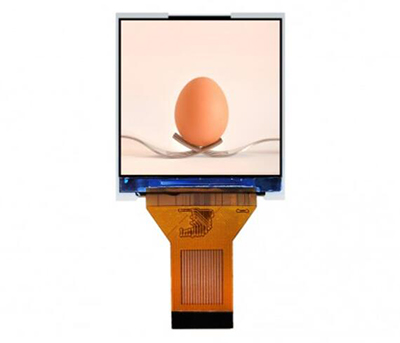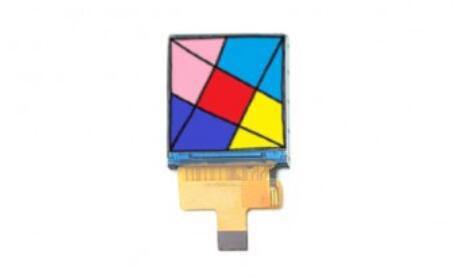What is LCD vs LED screen?
Views: 1153 Update date: Aug 08,2023
In the modern display technology, LCD and LED are acronyms that dominate conversations. These two contenders have revolutionized the way we perceive visuals, from the screens of our smartphones to the billboards towering over cityscapes. But what sets them apart?
LCD (Liquid Crystal Display) Technology
LCD, short for Liquid Crystal Display, forms the foundation of many contemporary screens. At its core, an LCD screen consists of liquid crystals trapped between two layers of glass. These crystals act as shutters, either allowing light to pass through or blocking it, based on an electrical charge. The result is the vibrant array of colors and images that grace our digital devices.
Key Features of LCD Screens:
Backlight Dependence: LCDs rely on an external light source, often provided by CCFL (Cold Cathode Fluorescent Lamp) or more recently, LEDs (Light Emitting Diodes), to illuminate the display. This can impact factors like contrast and energy efficiency.
LED, or Light Emitting Diode, takes display technology to a new level by serving as both the illumination source and the pixel itself. Unlike LCDs, LEDs emit light directly when an electric current passes through them. This unique attribute has paved the way for thinner, more energy-efficient screens with enhanced visual performance.
Key Features of LED Screens:
Superior Contrast: LED screens boast exceptional contrast ratios, as individual LEDs can be dimmed or turned off completely. This dynamic control over brightness results in deeper blacks and more vibrant whites.
Energy Efficiency: LED technology excels in energy efficiency, consuming significantly less power than traditional LCDs with CCFL backlighting. This not only reduces electricity costs but also contributes to a greener environment.
LCD vs LED
The choice between LCD and LED hinges on various factors, each catering to different preferences and applications.
When to Opt for LCD:
Budget Considerations: LCD screens often come with a more affordable price tag, making them an attractive option for cost-conscious consumers without sacrificing decent visual quality.
Color-Critical Work: Professionals in fields like graphic design, photography, and video editing may lean towards LCDs for their accurate color reproduction.
When LED Takes the Lead:
Visual Excellence: LED screens excel in delivering stunning visuals, with enhanced contrast, brightness, and color saturation. This makes them a favored choice for home theaters and immersive gaming setups.
Energy Consciousness: If energy efficiency is a priority, LED screens emerge as the clear winner, consuming less power and ultimately reducing long-term operating costs.
LCD (Liquid Crystal Display) Technology
LCD, short for Liquid Crystal Display, forms the foundation of many contemporary screens. At its core, an LCD screen consists of liquid crystals trapped between two layers of glass. These crystals act as shutters, either allowing light to pass through or blocking it, based on an electrical charge. The result is the vibrant array of colors and images that grace our digital devices.
Key Features of LCD Screens:
Backlight Dependence: LCDs rely on an external light source, often provided by CCFL (Cold Cathode Fluorescent Lamp) or more recently, LEDs (Light Emitting Diodes), to illuminate the display. This can impact factors like contrast and energy efficiency.
Color Accuracy: LCDs are known for their accurate color reproduction, making them a popular choice for applications requiring precise color representation, such as graphic design and professional video editing.
LED, or Light Emitting Diode, takes display technology to a new level by serving as both the illumination source and the pixel itself. Unlike LCDs, LEDs emit light directly when an electric current passes through them. This unique attribute has paved the way for thinner, more energy-efficient screens with enhanced visual performance.
Key Features of LED Screens:
Superior Contrast: LED screens boast exceptional contrast ratios, as individual LEDs can be dimmed or turned off completely. This dynamic control over brightness results in deeper blacks and more vibrant whites.
Energy Efficiency: LED technology excels in energy efficiency, consuming significantly less power than traditional LCDs with CCFL backlighting. This not only reduces electricity costs but also contributes to a greener environment.
LCD vs LED
The choice between LCD and LED hinges on various factors, each catering to different preferences and applications.
When to Opt for LCD:
Budget Considerations: LCD screens often come with a more affordable price tag, making them an attractive option for cost-conscious consumers without sacrificing decent visual quality.
Color-Critical Work: Professionals in fields like graphic design, photography, and video editing may lean towards LCDs for their accurate color reproduction.
When LED Takes the Lead:
Visual Excellence: LED screens excel in delivering stunning visuals, with enhanced contrast, brightness, and color saturation. This makes them a favored choice for home theaters and immersive gaming setups.
Energy Consciousness: If energy efficiency is a priority, LED screens emerge as the clear winner, consuming less power and ultimately reducing long-term operating costs.





